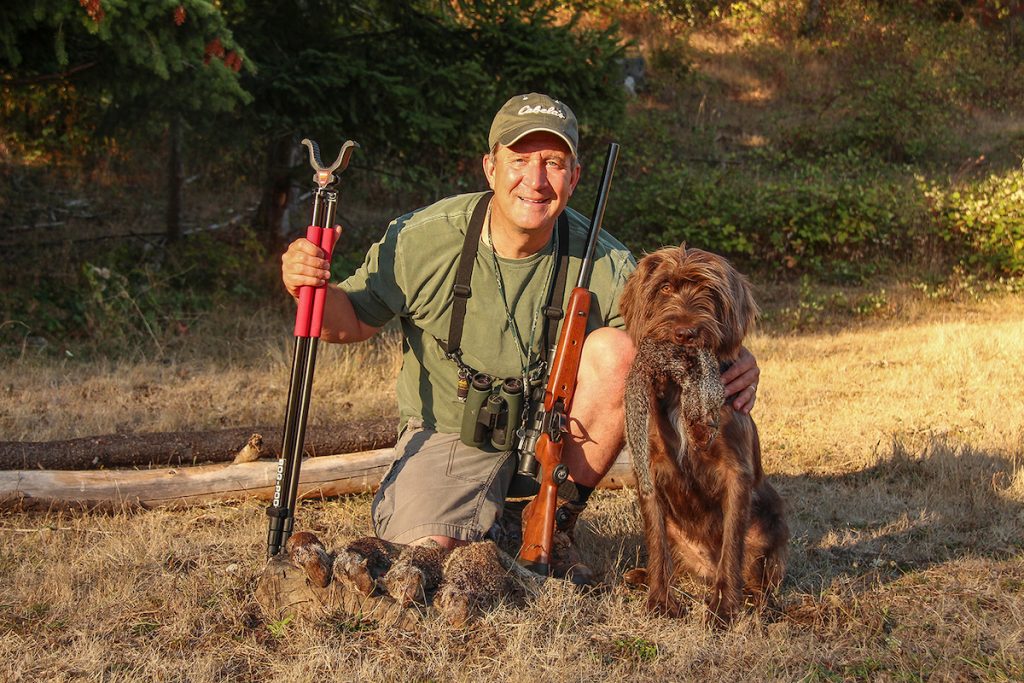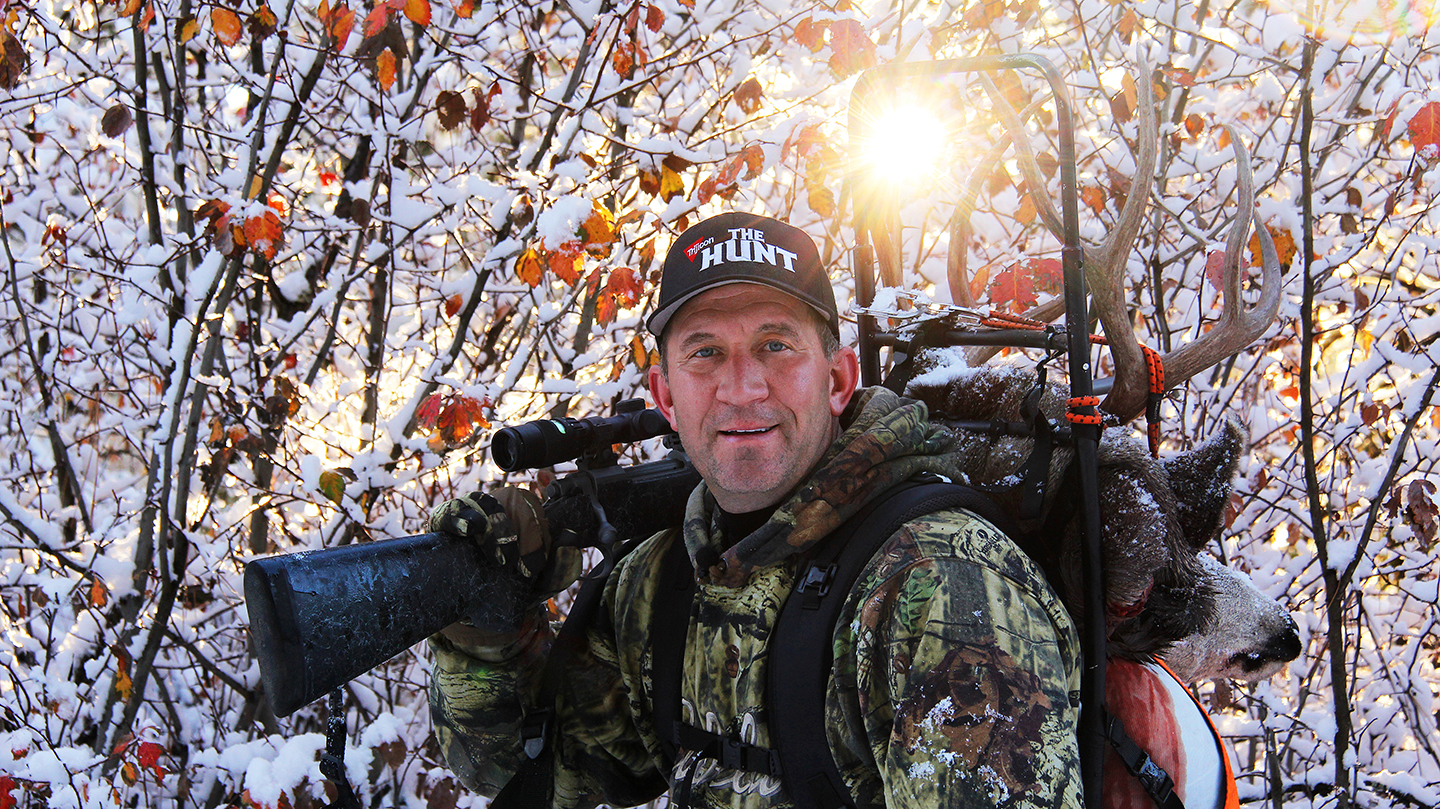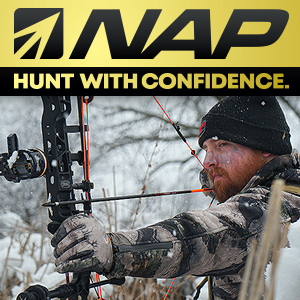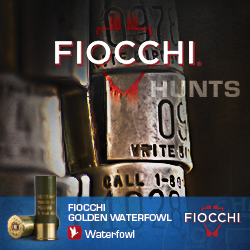There are many invasive species nationwide, and most can be hunted year-round. If you’re looking to sharpen your shooting skills and learn the ins and outs of your gear, invasive species are an excellent choice.
by Scott Haugen
By 11 a.m., it began to heat up, and my dogs were getting tired. It had been a busy morning. We started at daylight, focusing on shooting starlings in a recently cut grain field.
In July, family units of starlings begin joining in our area, marking the start of flock buildups that will number into the thousands come fall. The birds are hungry this time of year and spend mornings and evenings feeding in fields.
These are the same starlings that, by early winter, will grace the skies in mesmerizing murmuration and drive farmers up the wall. They raid stored grain piles, devour seeds and young crops, wreak havoc in cattle lots, and make a mess underneath wherever they roost at night.
In the spring and summer, they cause considerable monetary damage by consuming many varieties of fruits. Farmers want the starlings gone. Fortunately, starlings are invasive and can be hunted year-round in my home state.

On our morning hunt, I took a .22 rifle and went into it with three goals. First, I wanted to work with my dogs on breaking as they grow competitive in the off-season. We walked the wooded edges of fields, and the dogs healed, held, and retrieved on command, one at a time.
I also wanted to hone my shooting skills in preparation for big game hunts this fall. If you can hit a fidgeting starling at 50 yards consistently, shots at big game will seem simple.
Last, but not least, I wanted to see how CCi’s Sub-Sonic .22 Long Rifle shells performed in my Browning lever action rifle. I hoped to use this setup on gray squirrels this coming season, and this was the perfect testing ground.
At the end of the morning, it was mission accomplished. While we didn’t come close to putting a dent in the local starling population, the dogs did well retrieving over a dozen birds each, and I was happy with my shooting. The quiet, 40-grain CCi loads impressed me too, with their accuracy level and the minimal flesh damage that ensued. They’ll be an excellent bullet for squirrel and rabbit hunting this fall.
Starlings are just one invasive species that can be pursued all summer. Last week I went on another invasive species hunt near home for Eurasian collared doves. It’s open season on these doves year-round in my home state, and the same is true for most states that harbor populations of these invasive doves.
Many farmers hate them for the damage they inflict in livestock feed lots, and they’re masters at sneaking into covered grain storage facilities. I love them because their calls remind me of Africa. Plus, they’re easy to hit on the wing, at least on the first shot. Rock doves, or feral pigeons, offer similar hunting opportunities in other parts of the country, but we have few where I live. We don’t have the high-volume shoots numbering into the hundreds on these birds that other parts of the country do, but we shoot enough to make it worth the effort.
On last week’s Eurasian dove hunt, I took my Browning Maxus II 12 gauge and a couple of boxes of HEVI-SHOT’s new HEVI-Bismuth. I know what you’re thinking, “Why spend that much money on shells to shoot pesky doves?”
It’s a fair question.
I also shot ground squirrels with the load, and here’s why. When it comes time for a hunt, I don’t want to be surprised by any of my gear. I want to know how it performs and how everything handles. From my gun to the loads, from optics to shooting sticks, from clothes to accessories, from patterns on paper to how a shot tracks in the wind, I want to know precisely how all the pieces work, whether rifle or shotgun.
When I’m getting ready to shoot at a big game animal, I’m only thinking about the wind and shot placement. I’m not worrying about where the safety is on my gun, how to work the bolt, how far my eye should be from the scope, what happens if I miss, or how long I can sit still in the shooting sticks.

I don’t want to worry about loads cycling in my shotgun or question if the pattern will hold together. All that is learned before the hunt, and this is one of the most significant values of pursuing invasive species.
HEVI-SHOT’s new HEVI-Bismuth load features Federal’s Flitecontrol Flex wad — my favorite performing wad — with HEVI-Shot’s famed bismuth. The 3-inch, 1-3/8-ounce loads of #4 and #5, moving 1,450 fps, did well to 35 yards. Since that dove hunt, I’ve shot several ground squirrels and starlings with HEVI-Bismuth to test its effective range and lethality. I won’t hesitate shooting this load over duck decoys this season.

I’ve also been testing several shotgun loads in multiple gauges this summer. Are you wondering if that 12 gauge load is right for you? Or, do you want to see the difference between sub-gauges you’re considering hunting with this fall? That’s the beauty of hunting invasive species. They let you observe performance, not just speculate by patterning on paper or busting clays.

California ground squirrels are an invasive species in my area. You can walk the hills and maybe shoot four or five in a morning, or you can shoot 20 or more in colonies among farmlands. One place I hunt these squirrels is at about 2,500 feet elevation in the Cascade Range.
Each summer, I’ll take my big game rifle and cut loose on these creatures because the whole process resembles a big game hunt. I locate them with a spotting scope or binoculars. Shoot them from a prone position using a shooting bag or a sitting position using tripod shooting sticks. I range them, monitor the wind, and wait for a lull in heat waves, if necessary, before pulling the trigger. Each scenario plays out like a big game hunt. You can simulate a big game hunt by punching pop cans.
When shooting varmints with a high-powered rifle, you study the animal’s behavior and learn when to pull the trigger. You control your breathing and follow through to see if you hit the mark. You want to make sure you get your target because bullets are costly. But it’s a small price to pay for knowing how your gear performs and that you can accurately shoot it.
Perfect this, and your shooting levels will reach new heights on big game. If you miss a big game animal, you’ll find yourself shocked and wondering what went wrong.
Shooting prairie dog towns and colonies of Belding’s ground squirrels offers the same benefits but in higher numbers. Obviously, you won’t dump 500 rounds from your .300 Win. Mag. into a varmint colony, but you can take a few shots with it, then move to a .22 or .17.

When shooting high-volume varmints, I don’t just rifle through shells, hoping to hit as many critters as I can as fast as I can. I mount the same rifle scope on my rimfire guns as on my big game rifles. People often ask me, “Why would you put a $900 Trijicon scope on a .22?”

The answer is simple. Because I want to know all I can about this scope, how it transmits light, what the illuminated reticle looks like when shooting from the shade and into the shade. I want to know how it looks in heat waves, and I can learn to make quick lighting and magnification adjustments. Like my big game guns, I want to operate all parts of my scope without looking at it. I won’t invest in a nice .22 and get high-performing ammunition, then top it with a $50 scope.
This summer, check out the opportunity to hunt invasive species in your state. Know what species are open year-round and which have specified seasons. Find out if a hunting license or hunter education course is required in your state to hunt varmints.

Once you know the details, you’ll discover the valued opportunities to hunt invasive species in the summer. And more importantly, you’ll become a better shot due to the high-volume practice and getting to know your gear.





